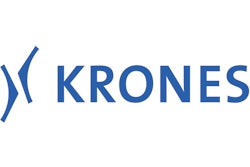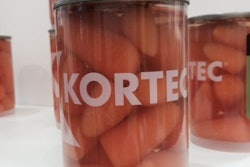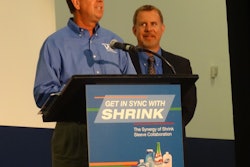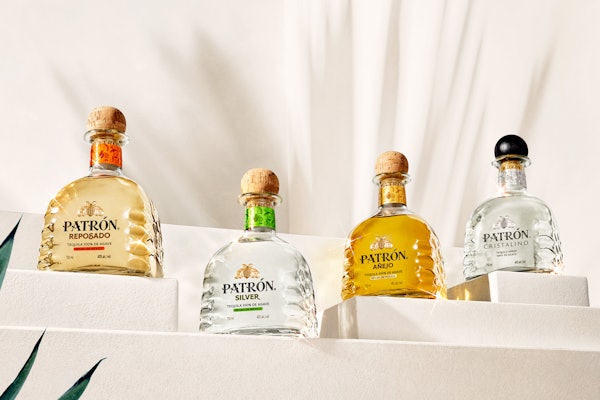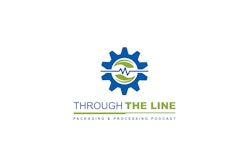
That’s pretty much what Coca-Cola Italy is doing in its Nogara facility since it switched from shrink bundling to the Krones EvoLite banding technology that was first introduced at interpack 2011. Other Italian beverage marketers on board with the EvoLite concept are Pineta (the first to commercialize EvoLite) and Toka. The Toka package shown here includes a polyethylene strap that the shopper uses to carry six bottles from store to car to home. Coke, on the other hand, uses EvoLite only as a stabilizing element during transport. Just one polyester band is wrapped horizontally around the six bottles as a substitute for shrink wrap. In the store, the bands are removed and consumers pick individual bottles from a shelf.
Also displayed at the Krones interpack 2014 booth were samples of PET bottles with direct digital printing via Krones new piezo-based DecoType technology.
A stop at the Essentra booth revealed active label technology in the form of Aquasense. It controls moisture content to help keep product fresh. Essentially a small polyolefin nonwoven pad applied typically like a pressure sensitive label, it absorbs and slowly releases a defined amount of water or liquid. First to use this active label technology is Imperial Tobacco on the lid of its tobacco canisters. The consumer moistens the pad to keep the tobacco fresh.
Biopolymers were also part of the interpack mix. One of the more intriguing ones was Skalax, which comes from Sweden’s Xylophane AB. It’s an efficient barrier against oxygen, grease, and aroma. A thin layer of Skalax on a paperboard carton can prolong the shelf life of many foods and industrial products. This material is also a suitable barrier against any harmful substances occurring in paperboard made from recycled fiber. Dispersion-coated on the inside of paperboard packaging, it can prevent mineral oils from inks in recycled fibers from migrating into food. The raw material for Skalax is xylan, which is isolated from crop waste. The xylan is then mixed with additives approved for food contact to tailor the properties to various applications.
Finally, an unusual injection stretch blow molded container developed by Sipa bears watching. Designed as a large-size dispenser bottle commonly seen in office settings, it’s a self-collapsing bottle that does not require mechanical crushing. Such a bottle is far more likely to make its way to the recycle stream than the difficult-to-collapse plastic bottles typically used today for large-volume dispensing applications. Simulations with FEM (Finite Element Method) analysis played a key role in development of the bottle. The concept is not yet in commercial use, but bottles shown at interpack weighed 110 to 140 g, held 12 L, and had a 55-mm neck finish.






